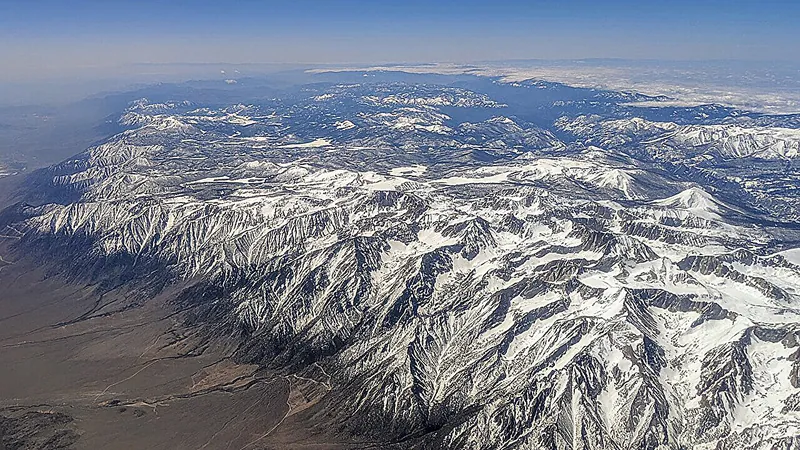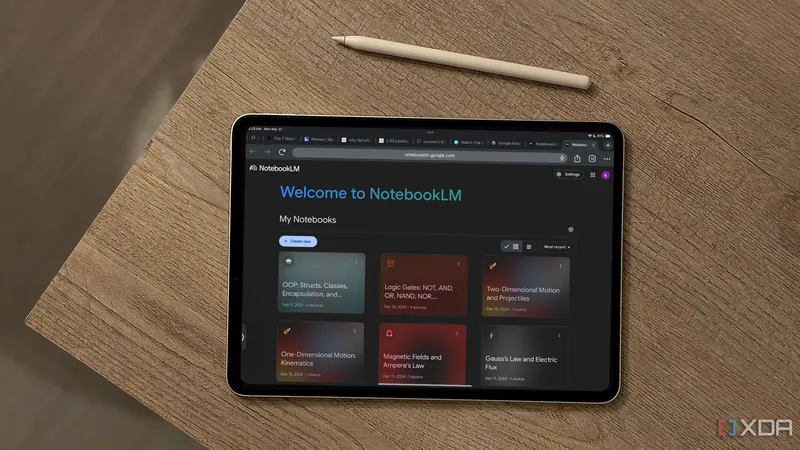
Is California's Sierra Nevada Hiding a Geological Mystery? New Insights into Lithospheric Foundering Emerged!
2025-01-20
Author: Benjamin
Exploring the Depths of the Sierra Nevada
Deep beneath the iconic peaks of California's Sierra Nevada, researchers are uncovering startling evidence that could change our understanding of Earth's geological processes. The continental crust, formed from denser basaltic rocks in the upper mantle, may be undergoing a dramatic transformation known as "foundering." This hypothesized process suggests that the lower lithosphere becomes denser than the underlying mantle, leading it to split away and sink into the mantle—a phenomenon not yet conclusively proven until now.
Groundbreaking Research
A team of geoscientists led by Vera Schulte-Pelkum and Deborah Kilb embarked on an ambitious mission to investigate this theory. By employing groundbreaking receiver function analysis, they were able to create detailed images of the lower crust and the uppermost mantle beneath the Sierra Nevada. This advanced technique utilizes seismic waves, which change in frequency and speed as they traverse various geological structures, providing insights into the hidden dynamics beneath the surface.
Unusual Seismic Activity
In tandem with this imaging, the researchers sifted through extensive earthquake data from the Advanced National Seismic System Comprehensive Earthquake Catalog (ComCat). Their analysis revealed a surprising trend: a band of small earthquakes, with magnitudes ranging from 1.9 to 3.2, occurred at depths of 40 kilometers and greater in the central Sierra. Such deep seismic activity is unusual and points toward the presence of a denser layer, potentially indicative of lithospheric foundering, according to their research published in the esteemed journal, Geophysical Research Letters.
Insights from Seismic Responses
Interestingly, the team's findings indicated a pronounced difference in seismic responses along the mountain range, demarcating a unique layer within the mantle that diminishes in clarity as one moves northward. This observation supports the existing theory that a segment of the lithosphere beneath the southern Sierra has been sinking for millions of years. The researchers speculate that a cold slab of continental lithosphere can crack instead of flowing, which is more typical of hotter materials at similar depths—this mechanism might account for the deep earthquake activities recorded in this central region.
Geological Implications
Moreover, the absence of evidence for a similar layer in the northern Sierra suggests that the foundering process has yet to reach that area, hinting at a northward movement of this geological phenomenon. Previous studies have also identified a gradient Moho—the boundary between the crust and mantle—under the Sierra, as opposed to the expected sharp delineation. Additionally, there are implications that a cold mantle anomaly in the Great Valley region, situated to the west, may signify that dense lithosphere has been lost to the foundering process.
Looking Toward the Future
This ongoing geological drama has been unfolding for at least 3 million years, and researchers are keeping a keen eye on the potential for this intriguing natural process to advance further north. The implications of these findings not only shed light on the geological history of the Sierra Nevada but also contribute to a broader understanding of differentiation processes in Earth’s crust.
Conclusion
Stay tuned as these revelations could redefine our perspective on tectonic activity and the ever-evolving landscape of California! Could this gradually senile monster beneath the surface one day lead to significant geological events? Only time will tell!









 Brasil (PT)
Brasil (PT)
 Canada (EN)
Canada (EN)
 Chile (ES)
Chile (ES)
 Česko (CS)
Česko (CS)
 대한민국 (KO)
대한민국 (KO)
 España (ES)
España (ES)
 France (FR)
France (FR)
 Hong Kong (EN)
Hong Kong (EN)
 Italia (IT)
Italia (IT)
 日本 (JA)
日本 (JA)
 Magyarország (HU)
Magyarország (HU)
 Norge (NO)
Norge (NO)
 Polska (PL)
Polska (PL)
 Schweiz (DE)
Schweiz (DE)
 Singapore (EN)
Singapore (EN)
 Sverige (SV)
Sverige (SV)
 Suomi (FI)
Suomi (FI)
 Türkiye (TR)
Türkiye (TR)
 الإمارات العربية المتحدة (AR)
الإمارات العربية المتحدة (AR)